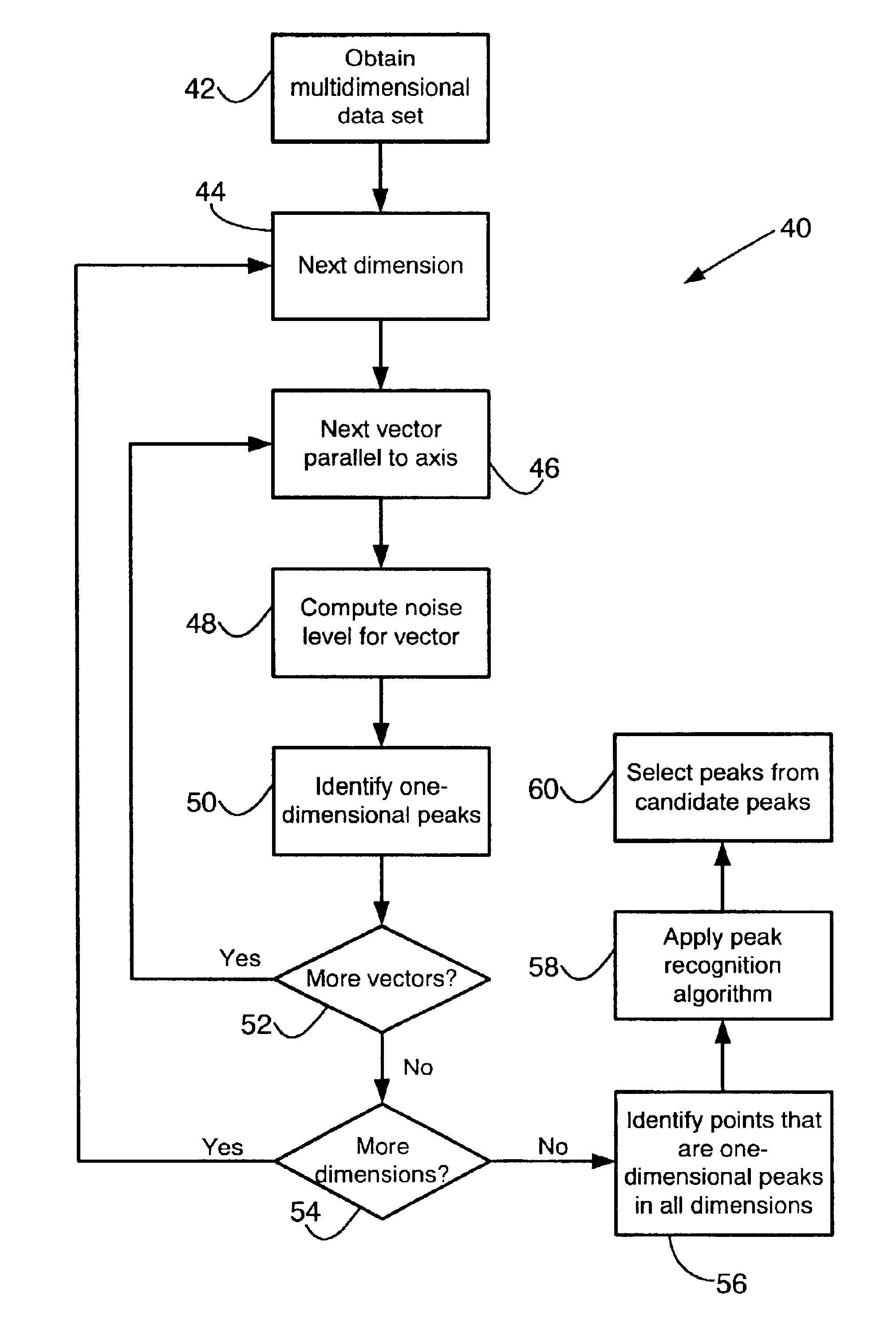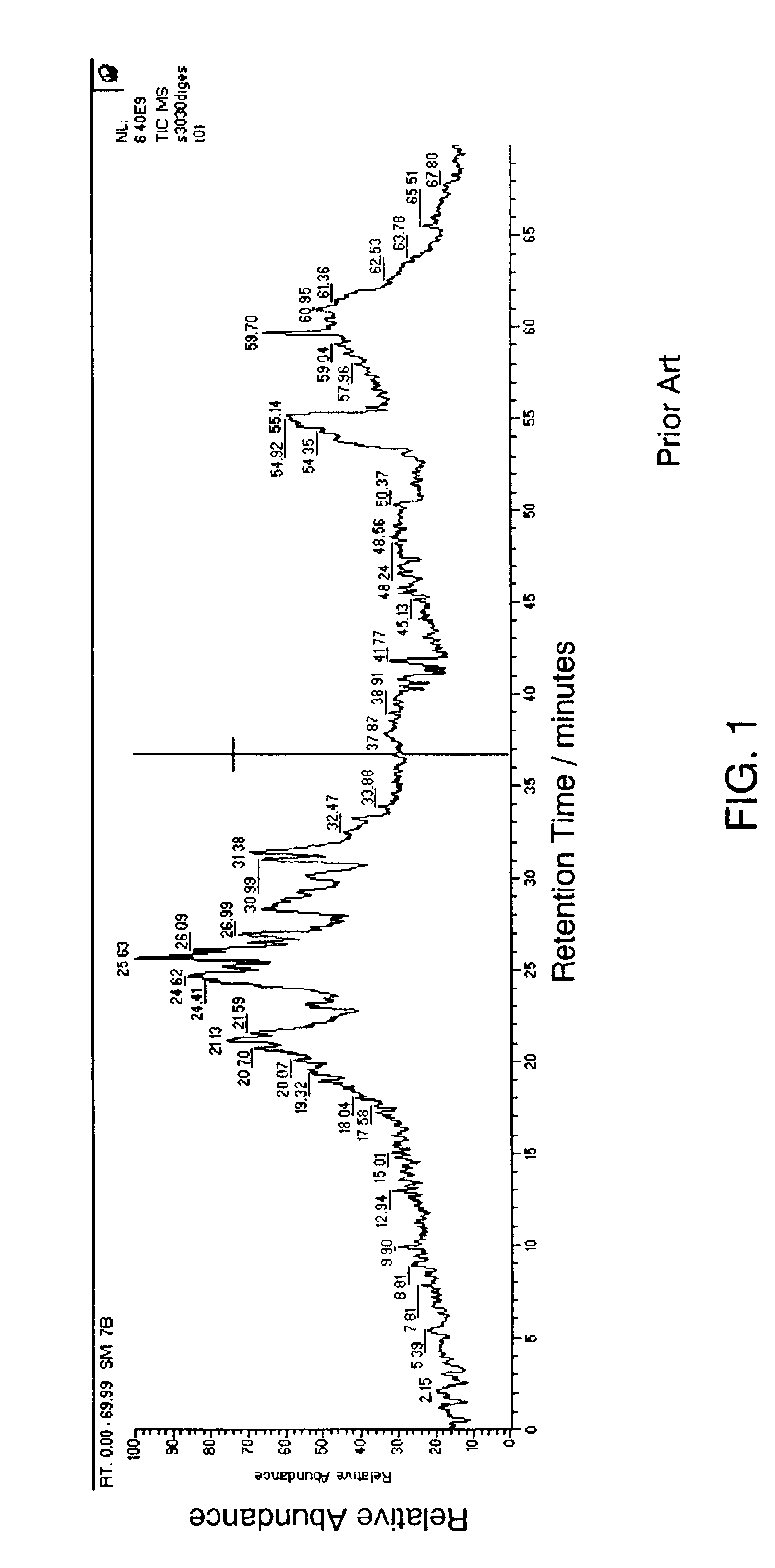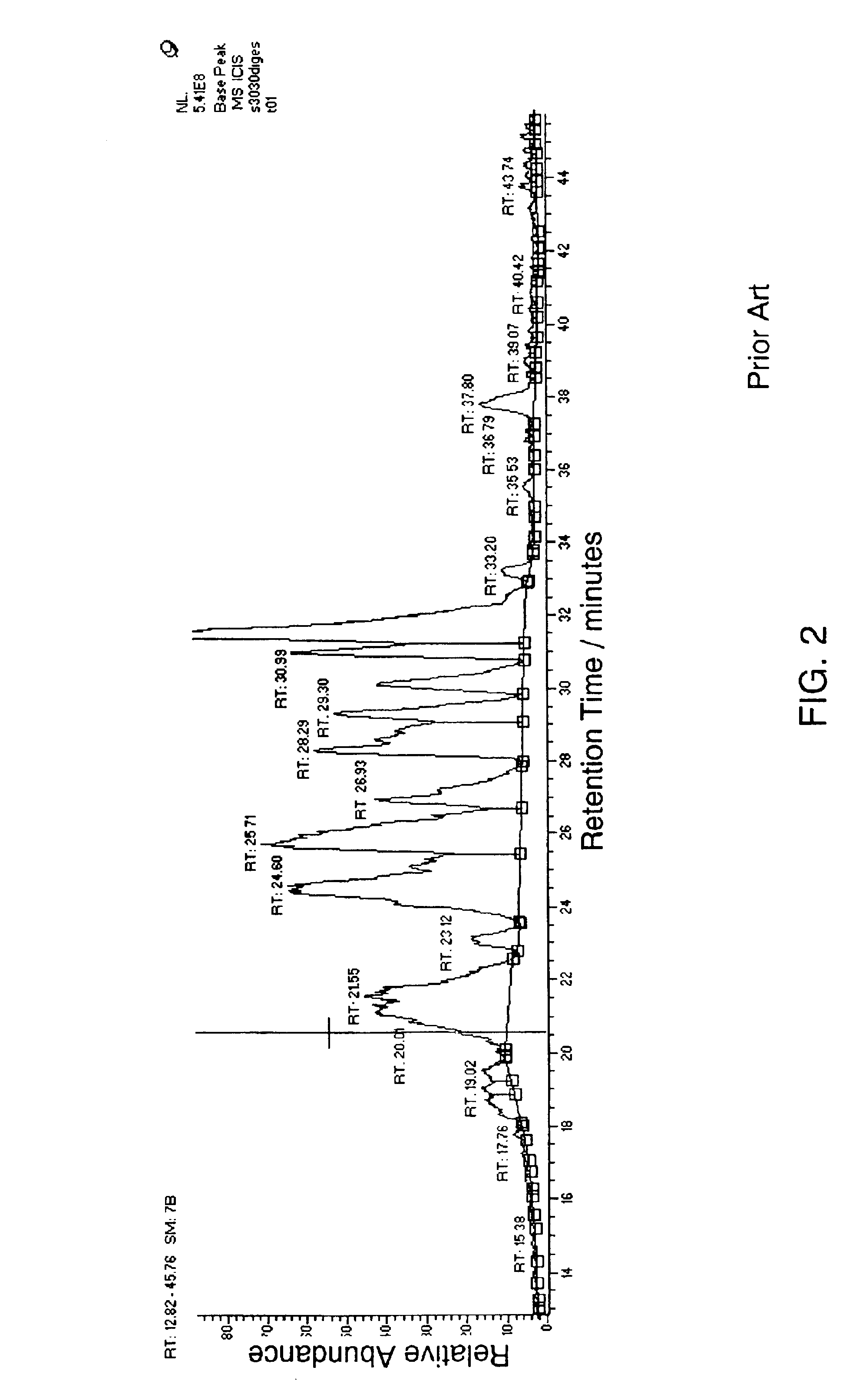Peak selection in multidimensional data
a multi-dimensional data and peak selection technology, applied in chemical methods analysis, separation processes, instruments, etc., can solve the problems of insufficient effectiveness of existing multi-dimensional peak picking algorithms such as autopsy, and the difficulty of automating peak picking, so as to facilitate the automation of high-throughput analysis
- Summary
- Abstract
- Description
- Claims
- Application Information
AI Technical Summary
Benefits of technology
Problems solved by technology
Method used
Image
Examples
Embodiment Construction
The present invention provides a method for automatic peak selection in multidimensional data. For illustration purposes, the invention will be described with respect to two-dimensional liquid chromatography-mass spectrometry (LC-MS) data. However, it is to be understood that the invention can be applied to any type of multidimensional data (i.e., two or more dimensions). The invention is particularly well suited to data that has different noise characteristics in different dimensions, or that has non-normally distributed noise, and that therefore cannot be processed effectively using standard multidimensional peak picking algorithms. However, the invention can equally well be applied to data characterized by normally distributed noise in all dimensions.
As used herein, multidimensional data refers to data that can be understood or characterized as having multiple independent variables and a single dependent variable. The dimensionality of the data refers to the number of independent...
PUM
| Property | Measurement | Unit |
|---|---|---|
| dimension | aaaaa | aaaaa |
| threshold value | aaaaa | aaaaa |
| threshold | aaaaa | aaaaa |
Abstract
Description
Claims
Application Information
 Login to View More
Login to View More - R&D
- Intellectual Property
- Life Sciences
- Materials
- Tech Scout
- Unparalleled Data Quality
- Higher Quality Content
- 60% Fewer Hallucinations
Browse by: Latest US Patents, China's latest patents, Technical Efficacy Thesaurus, Application Domain, Technology Topic, Popular Technical Reports.
© 2025 PatSnap. All rights reserved.Legal|Privacy policy|Modern Slavery Act Transparency Statement|Sitemap|About US| Contact US: help@patsnap.com



